Signal sequence-independent SRP-SR complex formation at the membrane suggests an alternative targeting pathway within the SRP cycle
- PMID: 21551068
- PMCID: PMC3128533
- DOI: 10.1091/mbc.E11-02-0152
Signal sequence-independent SRP-SR complex formation at the membrane suggests an alternative targeting pathway within the SRP cycle
Abstract
Protein targeting by the signal recognition particle (SRP) and the bacterial SRP receptor FtsY requires a series of closely coordinated steps that monitor the presence of a substrate, the membrane, and a vacant translocon. Although the influence of substrate binding on FtsY-SRP complex formation is well documented, the contribution of the membrane is largely unknown. In the current study, we found that negatively charged phospholipids stimulate FtsY-SRP complex formation. Phospholipids act on a conserved positively charged amphipathic helix in FtsY and induce a conformational change that strongly enhances the FtsY-lipid interaction. This membrane-bound, signal sequence-independent FtsY-SRP complex is able to recruit RNCs to the membrane and to transfer them to the Sec translocon. Significantly, the same results were also observed with an artificial FtsY-SRP fusion protein, which was tethered to the membrane via a transmembrane domain. This indicates that substrate recognition by a soluble SRP is not essential for cotranslational targeting in Escherichia coli. Our findings reveal a remarkable flexibility of SRP-dependent protein targeting, as they indicate that substrate recognition can occur either in the cytosol via ribosome-bound SRP or at the membrane via a preassembled FtsY-SRP complex.
Figures

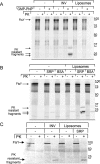
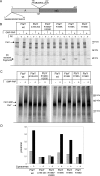
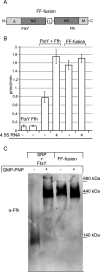

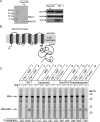

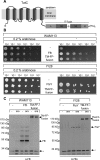

Similar articles
-
Predominant membrane localization is an essential feature of the bacterial signal recognition particle receptor.BMC Biol. 2009 Nov 13;7:76. doi: 10.1186/1741-7007-7-76. BMC Biol. 2009. PMID: 19912622 Free PMC article.
-
The bacterial SRP receptor, SecA and the ribosome use overlapping binding sites on the SecY translocon.Traffic. 2011 May;12(5):563-78. doi: 10.1111/j.1600-0854.2011.01167.x. Epub 2011 Feb 25. Traffic. 2011. PMID: 21255212
-
Lipid activation of the signal recognition particle receptor provides spatial coordination of protein targeting.J Cell Biol. 2010 Aug 23;190(4):623-35. doi: 10.1083/jcb.201004129. J Cell Biol. 2010. PMID: 20733058 Free PMC article.
-
Structural insights into the signal recognition particle.Annu Rev Biochem. 2004;73:539-57. doi: 10.1146/annurev.biochem.73.011303.074048. Annu Rev Biochem. 2004. PMID: 15189152 Review.
-
Targeting and Insertion of Membrane Proteins.EcoSal Plus. 2017 Mar;7(2):10.1128/ecosalplus.ESP-0012-2016. doi: 10.1128/ecosalplus.ESP-0012-2016. EcoSal Plus. 2017. PMID: 28276312 Free PMC article. Review.
Cited by
-
Signal recognition particle and SecA cooperate during export of secretory proteins with highly hydrophobic signal sequences.PLoS One. 2014 Apr 9;9(4):e92994. doi: 10.1371/journal.pone.0092994. eCollection 2014. PLoS One. 2014. PMID: 24717922 Free PMC article.
-
Ribosome-SRP-FtsY cotranslational targeting complex in the closed state.Proc Natl Acad Sci U S A. 2015 Mar 31;112(13):3943-8. doi: 10.1073/pnas.1424453112. Epub 2015 Mar 16. Proc Natl Acad Sci U S A. 2015. PMID: 25775537 Free PMC article.
-
Protein Transport Across the Bacterial Plasma Membrane by the Sec Pathway.Protein J. 2019 Jun;38(3):262-273. doi: 10.1007/s10930-019-09841-8. Protein J. 2019. PMID: 31134461 Review.
-
Dynamic interaction of the sec translocon with the chaperone PpiD.J Biol Chem. 2014 Aug 1;289(31):21706-15. doi: 10.1074/jbc.M114.577916. Epub 2014 Jun 20. J Biol Chem. 2014. PMID: 24951590 Free PMC article.
-
Signal recognition particle: an essential protein-targeting machine.Annu Rev Biochem. 2013;82:693-721. doi: 10.1146/annurev-biochem-072711-164732. Epub 2013 Feb 13. Annu Rev Biochem. 2013. PMID: 23414305 Free PMC article. Review.
References
-
- Alami M, Trescher D, Wu L-F, Müller M. Separate analysis of twin-arginine translocation (Tat)-specific membrane binding and translocation in Escherichia coli. J Biol Chem. 2002;277:20499–20503. - PubMed
Publication types
MeSH terms
Substances
LinkOut - more resources
Full Text Sources
Molecular Biology Databases
Research Materials

